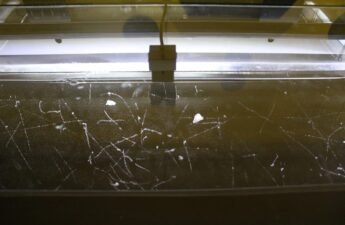The ladder for fishes is a construction which reduces environmental impact caused by hydro power plants and it is this post’s subject.
Environmental impact
Many fish species go up the river for spawning and the offspring go down the river.

The construction of a dam blocks the river’s course and prevent the fish to go up the river for reproduction. Causing fish extinction, which harms the food chain and ecosystem. Many hydro power plants have ladder for fishes go up the river to spawning.

Pool-weir type ladder
This is the pool-weir type. It is formed by small pools connected by small slots to control the water flux. The flux speed can’t be bigger than swimming capacity of fishes.

Fishes can rest in the pool’s wall without be taken by the water flux. The pools can have many shapes.


Some ladders have slots in the deep to fishes pass.
Rock ramp
The rock ramp is a cheaper alternative, but requires more caution in construction and design to avoid loss of depth by water infiltration, in addition to maintenance which involves debris and weed removal. This is the appropriate for short dams.

Denil ladder
This is the Denil ladder, uses an internal symmetric structure to control water flux.

Instead of separated pools, has a series of baffles in shape of “U” which form an angle in relation to the bottom.

In this ladder, the water flux speed is lower in the bottom than in surface. And can’t have any debris because it changes the flux speed.
Cone fishway
This is the cone fishway, made to pass fishes of many sizes. Uses concrete pillars in shape of cones to keep flux speed and turbulence level constants.

Lock and lift for fishes
Instead to go by a ladder, fishes are accumulated in a base area, this area is closed and filled with water until the up river level. The top gate is open to the fishes enter.

The fish lock is used in very high dams. Some dams have lifts to transport the fishes, after being attracted.

Natural bypass
This type uses earth and stones, simulating a natural bypass. If well designed, can transport all local fishes. However, requires bigger area.





